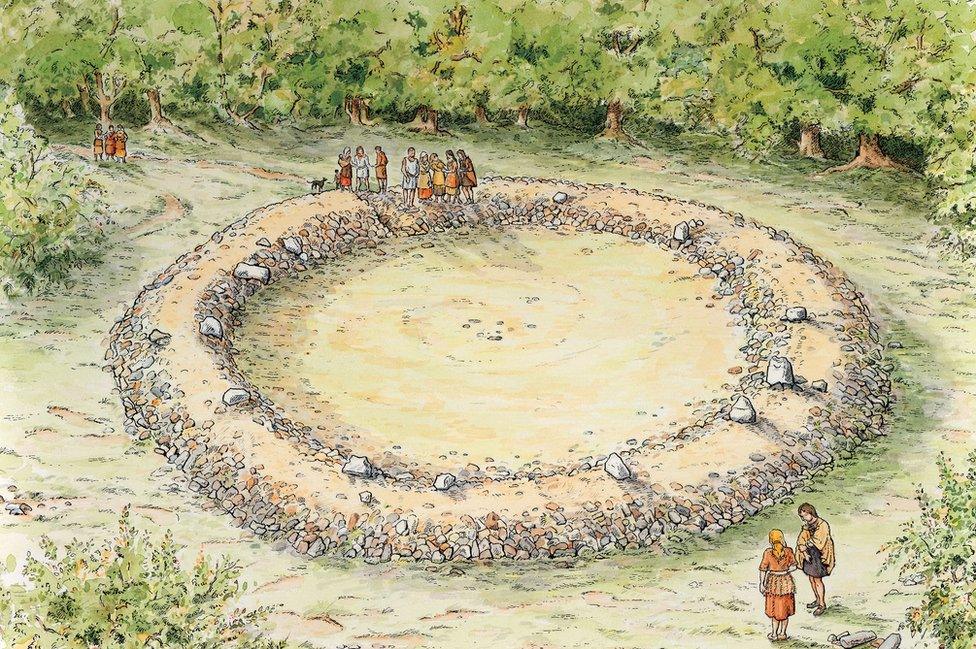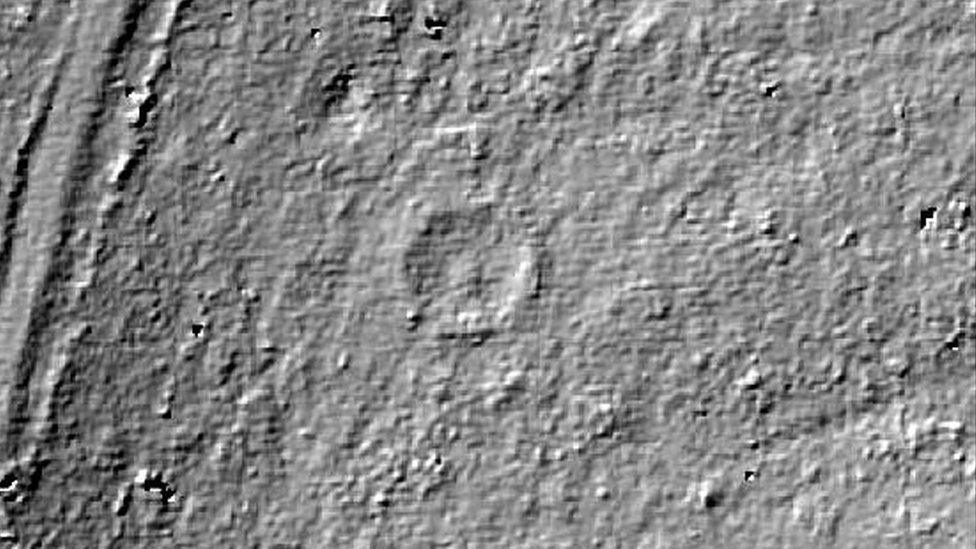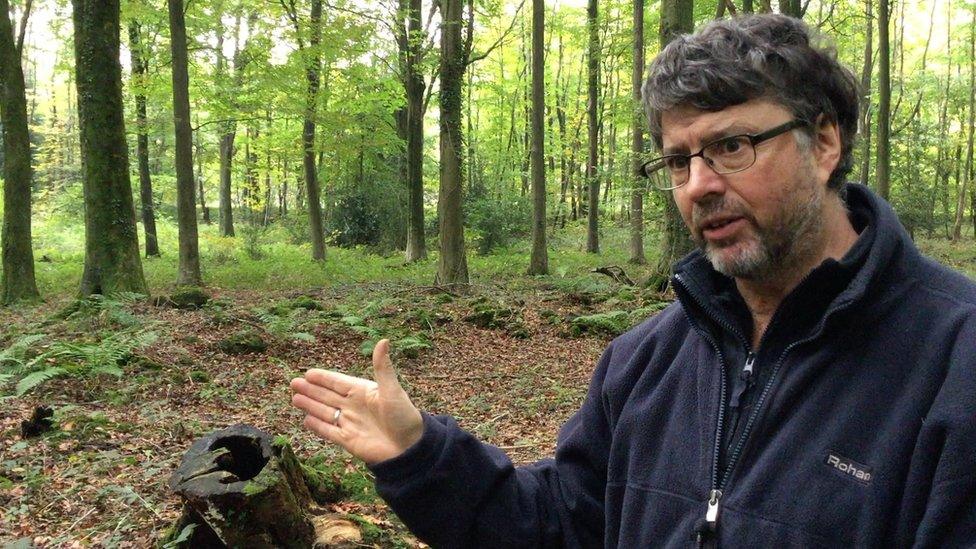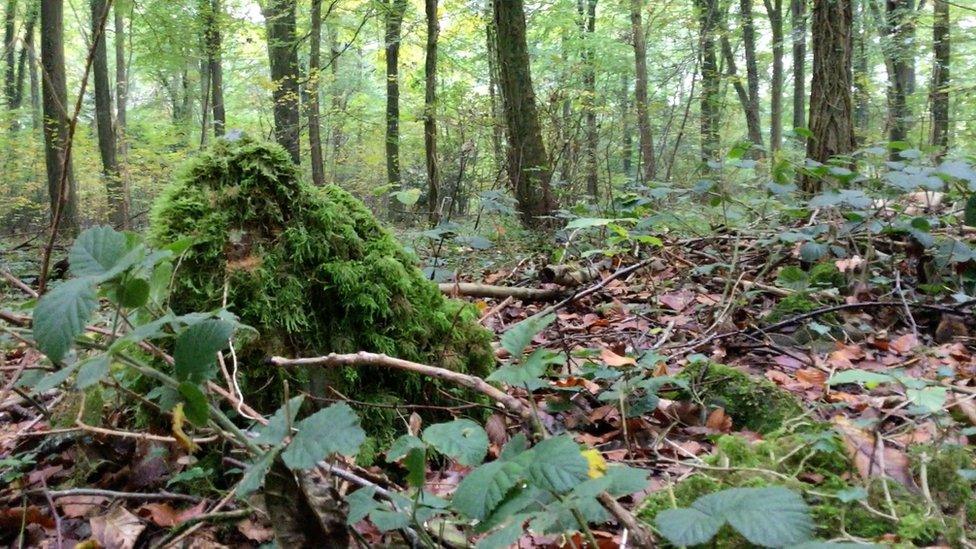Bronze Age monument discovered in Forest of Dean
- Published
Bronze Age monument discovered in Forest of Dean
A previously unknown Bronze Age monument has been discovered hidden in woodland in the Forest of Dean following an airborne laser scan.
The ritual monument, known as a ring cairn, dates back to about 2,000 BC.
It consists of a circular bank with several small limestone standing stones on top.
Archaeologist Jon Hoyle, who found it, said it was the only site of its kind known about in Gloucestershire, and was a "very significant" discovery.

Archaeologist Jon Hoyle said nobody knows precisely what ring cairns were used for
It was identified following a LiDAR (light detection and ranging) survey of the Forest of Dean.
The technique used laser beams fired from an aeroplane to create a 3D record of the land surface, effectively removing the trees from the landscape.
Mr Hoyle said when he studied the data, he spotted an "extremely circular" feature, which he thought initially might be a World War Two gun emplacement.
After visiting the site, at a secret location near the village of Tidenham, he realised it was much older, dating to between 2,500 BC and 1,500 BC.

A LiDAR survey of the forest revealed the circular feature beneath the trees
"It was very exciting. I was expecting to find quite a lot of new sites with the LiDAR, but nothing as interesting as this."
The ring cairn is about 25m (80ft) in diameter and made up of a 5m-wide (16ft) rubble bank, with at least 10 white limestone standing stones, each no more than 1m (3ft) high, standing on top.
Mr Hoyle said ring cairns were "common in upland areas, in places like Derbyshire, Northumberland and Wales" but this was the only known one in Gloucestershire.

Mr Hoyle said the discovery was "very exciting"
"Nobody knows precisely what they were used for. Some have been found in association with burials, and often there appear to be residues of charcoal in places like this, suggesting rituals that involved fire," he added.
The discovery is featured in a new book by Mr Hoyle - Hidden Landscapes of the Forest of Dean.
You may also be interested in:

It is the only known monument of its kind in Gloucestershire